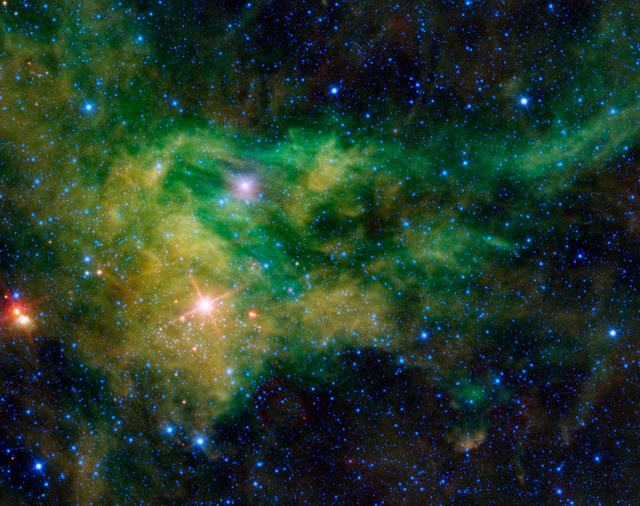Three hurricanes seen by Suomi NPP satellite
Meteorologists struggled to find the right words to describe the situation as a line of three hurricanes—two of them major and all of them threatening land—brewed in the Atlantic basin in September 2017.
Forecasters were most concerned about Irma, which was on track to make landfall in densely populated South Florida on September 10 as a large category 4 storm. Meanwhile, category 2 Hurricane Katia was headed for Mexico, where it was expected to make landfall on September 9. And just days after Irma devastated the Leeward Islands, the chain of small Caribbean islands braced for another blow—this time from category 4 Hurricane Jose.
The Visible Infrared Imaging Radiometer Suite (VIIRS) on the Suomi NPP satellite captured the data for a mosaic of Katia, Irma, and Jose as they appeared in the early hours of September 8, 2017. The images were acquired by the VIIRS “day-night band,” which detects light signals in a range of wavelengths from green to near-infrared, and uses filtering techniques to observe signals such as city lights, auroras, wildfires, and reflected moonlight. In this case, the clouds were lit by the nearly full Moon. The image is a composite, showing cloud imagery combined with data on city lights.
As all three storms approach land, meteorologists will be using assets on the ground, in air, and in space to track them. “Our human assets and aircraft penetrations are critical but limited,” said Marshall Shepherd, an atmospheric scientist at the University of Georgia. “Satellites provide a unique perspective on clouds, rainfall, sea surface state, sea surface temperature, and more. Only the satellite vantage point can provide continuous coverage of all three storms without having to refuel or sleep.”
Image Credit: NASA Earth Observatory
Explanation from: https://earthobservatory.nasa.gov/IOTD/view.php?id=90931




Comments
Post a Comment